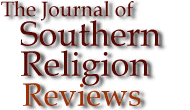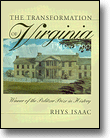





| "...Isaac's treatment of causality in Virginia history remains The Transformation of Virginia's central weakness, one which stems both from his focus on dramaturgy as the interpretive key to history and from his implicitly progressive narrative framework." | |




